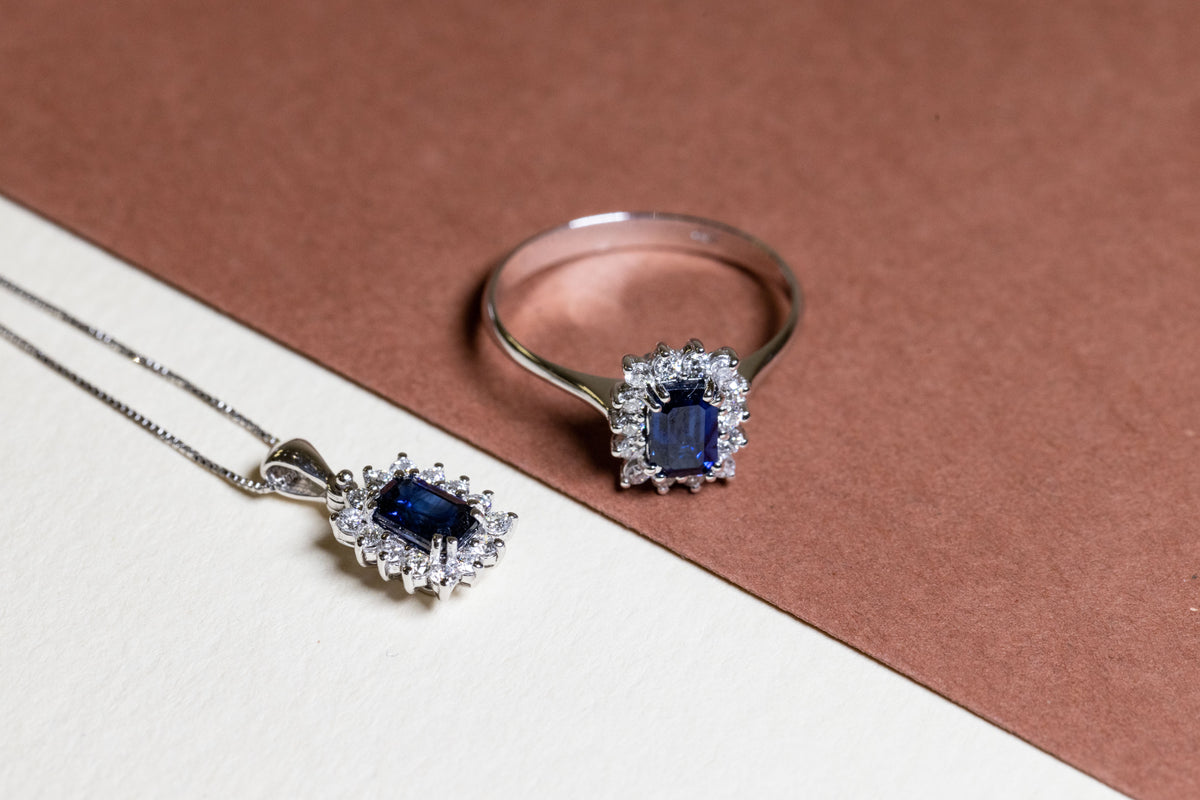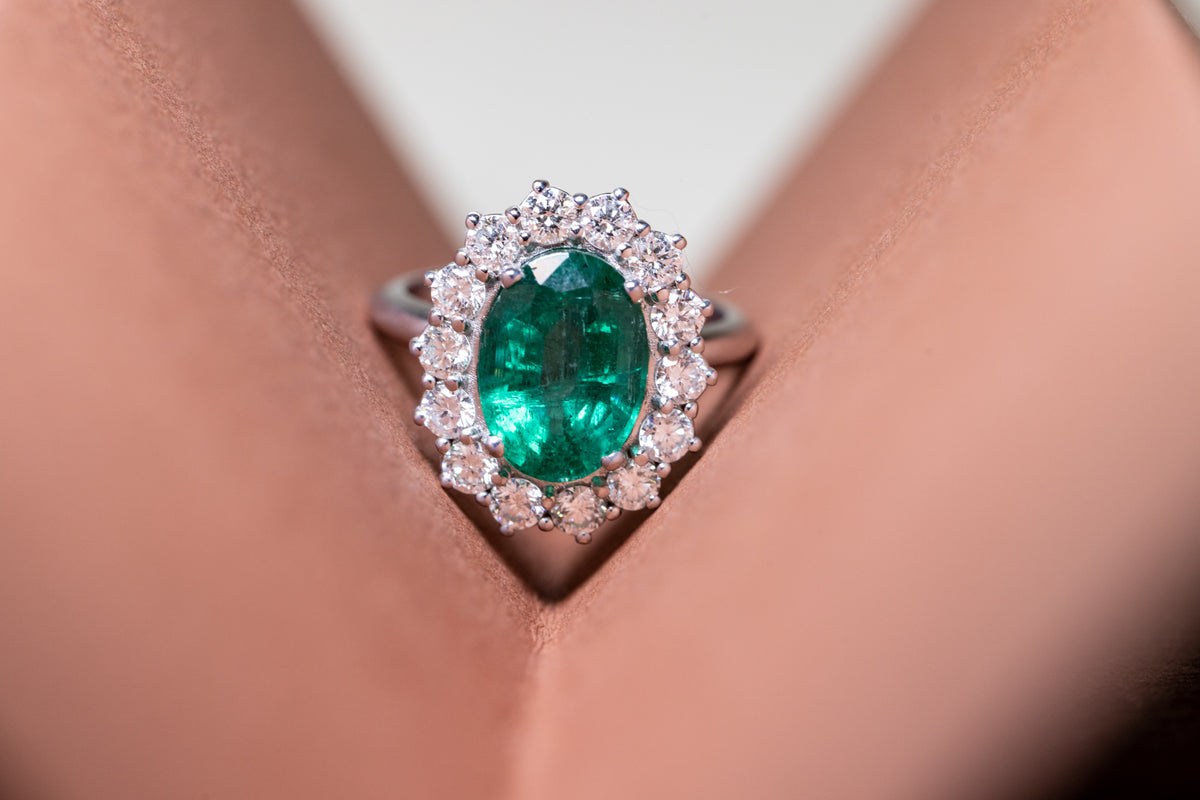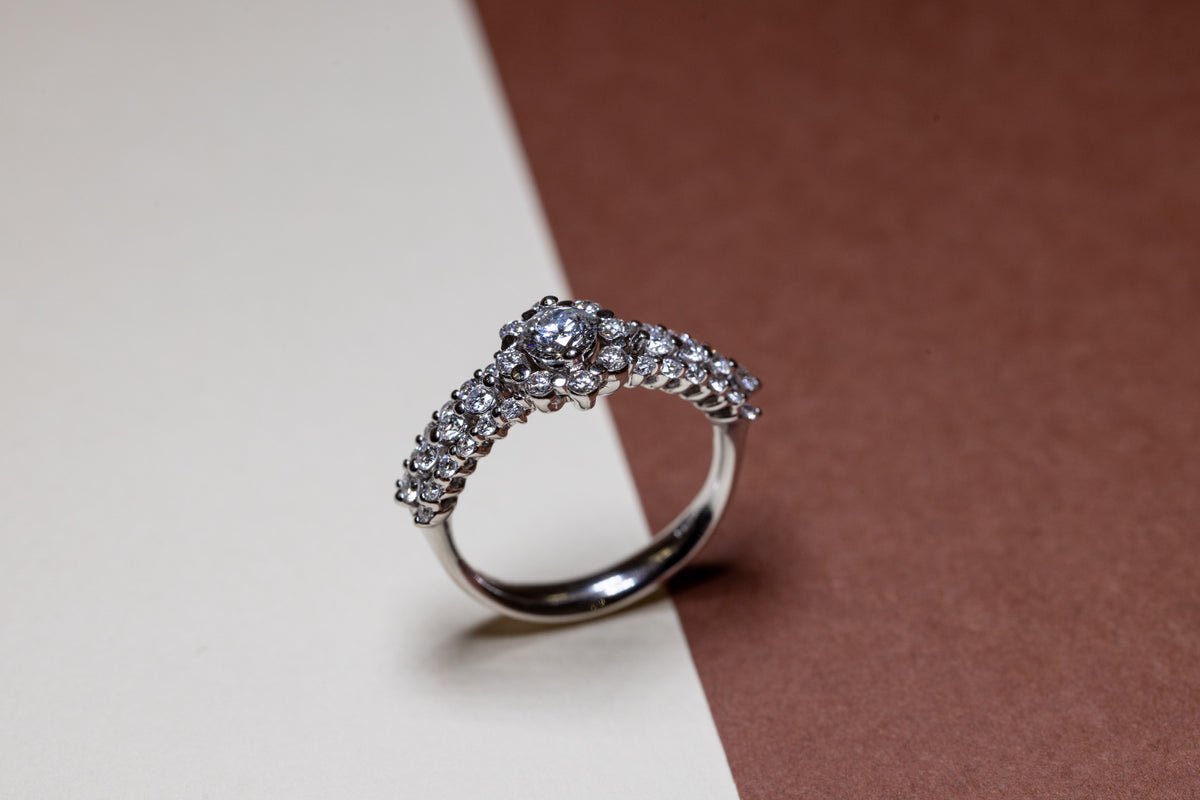Pay in installments with
Professional Identification Tools A gemologist or diamond expert uses specialized tools to determine the authenticity of a diamond . A magnifying glass or microscope is essential for inspecting the stone for internal imperfections, called inclusions. Unlike imitations, a real diamond will have small imperfections that are often imperceptible to the naked eye. Additionally, a diamond tester can reveal how the stone conducts heat and electricity, thus distinguishing a genuine diamond from a zirconia or other imitations.
Evaluating Surface and Weight When it comes to diamonds, every detail matters. The surface of a genuine diamond should be smooth and solid, without any glass-like coatings. Furthermore, knowing a diamond's weight or carat weight can provide valuable information. If a diamond appears to weigh more than one of the same size you already own, this could be a warning sign. Transparency and Hardness A diamond's transparency can reveal a lot about its authenticity. A simple test is to place the diamond on a sheet of white paper: if you notice any marks or imperfections, it may not be of high quality. Furthermore, hardness is one of the distinguishing characteristics of diamonds. A genuine diamond should not scratch easily, even when rubbed with sandpaper. Testers and Specific Checks For smaller diamonds, there are pocket testers that can help determine their authenticity. For example, if you fog a diamond with your breath—if it remains wet for more than three seconds—this could be a sign that it's not genuine.
Paper Test : This is one of the simplest methods for testing a diamond's authenticity. Take a sheet of paper with a black dot or writing and place the diamond on it. If you can read through the diamond, it's likely not real. Real diamonds refract light in such a way that it's nearly impossible to see clearly through them. Breath Test : Blow on the diamond with warm breath. If the tarnish disappears quickly, the diamond is likely real. Diamonds have a great ability to conduct heat, so the tarnish dissipates quickly. Water Test : Fill a glass with water and gently drop the diamond into it. Due to its high density, a real diamond should sink. If it floats, it may not be genuine. Observation with a magnifying glass : When examining the facets and surface of the diamond, a real diamond will have sharp edges between the facets and few scratches, due to its exceptional hardness. Consult the Experts. While do-it-yourself methods can provide guidance, the only way to be completely sure of a diamond's authenticity is through a professional analysis. Gemological laboratories are equipped with advanced instruments that can accurately determine whether a diamond is natural, synthetic, or a complete imitation.
The Emotional Value of a Diamond : Long symbols of love, commitment, and luxury, diamonds carry a profound meaning. When we gift or receive one of these precious stones, we expect it to represent not only monetary value, but also a commitment and a promise. The Disappointment of a Fake Diamond : Discovering that a piece of jewelry believed to be authentic is not can generate feelings of disappointment and betrayal. This realization underscores the importance of ensuring a diamond's authenticity, especially when it symbolizes a special moment or memory. The Importance of Verification : Beyond its intrinsic value, a genuine diamond reinforces the meaning of the gesture associated with it, whether it be a gift, a commitment, or a token of appreciation. Verifying its authenticity preserves and protects this symbolic value. Conclusion : While this guide provides tools for identifying fake diamonds, it is crucial to remember that the true essence of a diamond goes beyond its physical appearance, representing trust, love, and dedication.
Before purchasing a diamond, it's essential to be informed about its authenticity. The market offers imitation diamonds that can fool even the most expert eye. To ensure a safe purchase, it's essential to receive a certificate of authenticity at the time of purchase. These certificates, issued by independent gemological laboratories, attest to a diamond's characteristics and quality, providing detailed information about its color, clarity, carat, and cut. These documents are essential to ensure the diamond has been objectively appraised and to provide a clear understanding of its value. They can also be useful when reselling or insuring the jewelry. It's also advisable to consult professionals who hold the Responsible Jewellery Council (RJC) certification. This label ensures that the supplier adheres to high ethical standards, protecting both human rights and the environment throughout the jewelry's production process.
Find the Seller : Before making a purchase, it's essential to research the seller or jeweler. Read reviews, ask for references, and make sure they have a good reputation in the industry. Ask for a Certificate : As mentioned, a certificate of authenticity is essential when purchasing a diamond. This document will give you confidence that you're buying a quality diamond. Beware of Too-Good-To-Be-True Offers : If a diamond's price seems too low compared to its market value, it could be a warning sign. Diamonds have always been symbols of luxury, love, and commitment. However, with the rise of imitations and synthetic stones on the market, it's crucial to be informed and prepared before making a purchase. With the right knowledge and attention to detail, you can ensure you're making a safe investment and owning a precious stone that will last forever.



Receive your order immediately and pay in 3 to 12 installments.
Our team is always available to you 24/7.
We deliver all jewelry in Zahir personalized packaging.
Engrave a name, letter, or a date that's important to you, at no additional cost.